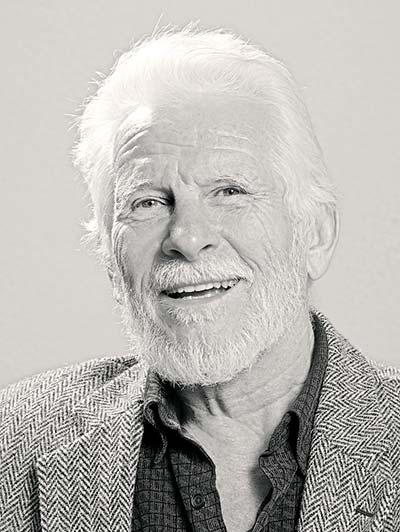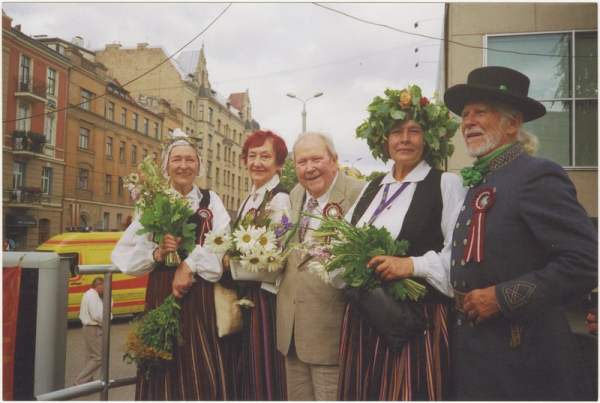Zigurds Miezītis
1933–2011
Choreographer, educator
One of the most active and versatile collectors and maintainers of the Latvian folk dance tradition in North America, he actively promoted co-operation between Latvia’s choreographers and dancers and those living in exile.
Born 3 October 1933 in Rīga. Spent his childhood years in Gulbene, but in 1944 fled to Germany with his parents as refugees. This was also his first interaction with dance, in a folk-dance group led by Vera Slavieša in Munster. Later moved to Canada (1951), where he obtained a degree in aeronautical engineering from the University of Toronto. He then taught physics and mathematics at Parkdale High School in Canada.
He became intensively involved in dance in 1952 with the Diždancis (Grand Dance) folk-dance group, but in 1959 he took over as the group’s director. Under the guidance of Miezītis, the dance group can be proud of its multiple wins in dance competitions, participation in numerous events, festivals and exile Latvian song festivals and days of song.
As part of the 3rd Latvian Song Festival in Canada, the artist organised the first grand Latvian folk-dance performance in North America (1961). Subsequently, Miezītis was a member of several Song-festival organising committees, and directed folk-dance performances in Canada, the US and Europe. He was also Chairman of the Organising Committee for the 9th Canadian Song Festival in Toronto (1991).
Has authored around 30 new dances, also the Koklētājs un velns (The Kokle Player and the Devil) dance performance with music by Bruno Skulte (1969). Actively participated in new-dance competitions both abroad and in Latvia. His dance performance – Saules meitas vedības (The Sun Girl’s Wedding) – was included in the repertoire of the XXVth All-Latvian Song and XVth Dance Celebration (2013).
He has also worked selflessly as a dance educator, having participated in almost every 2 x 2 and 3 x 3 camp, supervised and facilitated folk-dancing courses. Miezitis’ contribution to the book 88 Latvian Folk Dances and Arrangement (1973) is highly valued. This historically important publication brings together original dances from the 1920s, then documented and published by Johanna Rinka and Jēkabs Stumbris.
From the 1990, the artist’s ties with Latvia were especially reinforced. He has been active in organising the participation of foreign Latvians in All-Latvian Song and Dance Celebrations. In 2003, a magnificent concert of dances composed by Miezitis was organised at the Rīga Latvian Society House with the participation of Latvia’s best folk-dance groups. “The steps take us from the ancient prehistoric past through forests and glades ... asking for our complete surrender to the traditions that, like the sun and moon, the seasons, the rhythms of human life guide us from cradle to the grave, with birdsong, thunderclaps and the interplay of the Northern Lights ... Just as language grows and develops, constantly adapting to the needs of each new age, so does dance ... adapts, changes, gently leading us along the path of dance from the ancient past through dancing game to dancing game, dance to dance, to the present and then even further – trying to anticipate tomorrow!” (Miezītis, Zigurds. Canadian Latvian Song Festival programme. 1996, p 36)
A Chief choreographer at the 10th and 11th Dance Celebrations, Honorary Chief choreographer at the 13th Dance Celebration and Chief choreographer at the Rīga-800 Festival.
Bearer, Order of the Three Stars (2001), awarded the Goppers Foundation Prize for cultivating the sense of being Latvian in foreign countries and for his contribution to the preservation and development of Latvian dance.






